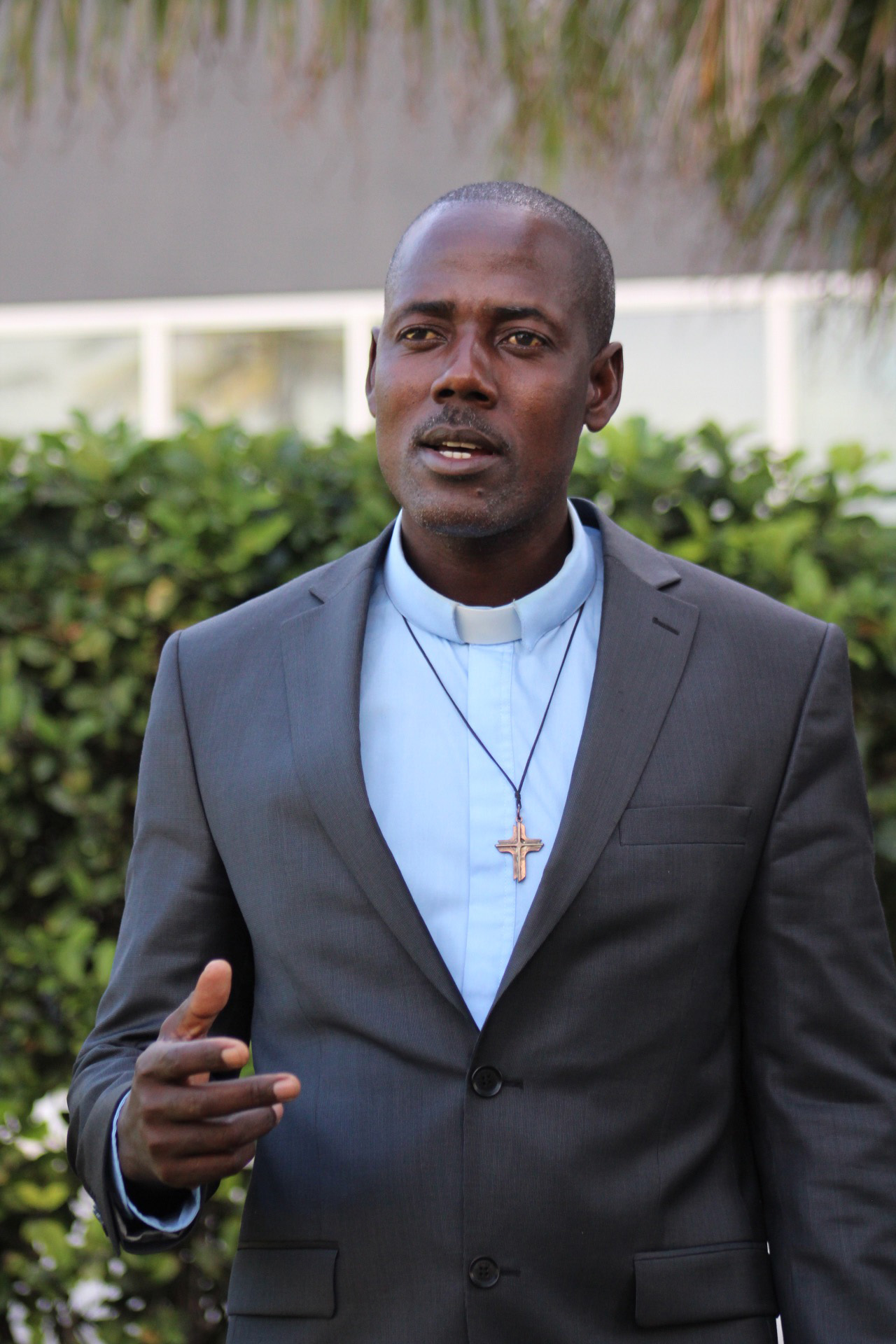The Eastern Angola Conference gears toward a future driven by analysis of names and numbers. Recently, the Rev. Andre Cassule Zundo Viera was appointed to the new role of conference statistician.
The conference has not had a statistics update report for two years. Viera’s goal is to retrieve the missing information. “I am working on closing the gap,” he said, “with the hope that, by the end of the year, we should be able to evaluate the progress of the church through statistics.”
Statistical data provides more than graphs or figures. Behind each figure or line of a graph is a story. In The United Methodist Church, the stories bring out lessons and questions on the causes of growth and decline.

The Rev. Andre Cassule Zundo Viera has been appointed to the new role of conference statistician in the Eastern Angola Conference. Photo by Priscilla Muzerengwa, UMNS.
An important tool, statistics measure the church’s impact and existence. The ability to monitor impact requires analyzing aggregated data collected over time. Based on these statistics, congregations can make better decisions that address members’ needs and bring more people to Christ.
Viera wants to be able to collect necessary data from local churches right up to the time of annual conference. Data must be aggregated and analyzed quickly to help with decision-making.
“I want to be able to put our records together, … search records and produce reports according to various categories such as membership, marital status, employment and many more,” he emphasized.
Viera acknowledged that his main challenge is not having necessary resources to run his office. He is using his personal computer and printer. “I want the office to be equipped so that my end of term will not negatively impact the established records,” he explained.
The Rev. Taurai Emmanuel Maforo, Zimbabwe West Conference communicator, emphasized the need for a well-equipped central data-collection office.
“This is critical to the life of the church because any loss of statistical record of an annual conference impacts negatively on that conference standing at a global level,” said Maforo.
Ashley Gish, United Methodist Communication’s director of strategy for global communications technology, welcomed the conference efforts.
“It is exciting to have conferences moving toward data-driven decision making, and United Methodist Communications stands ready to engage in conversations about the ways we might support conferences in this mission,” Gish said.
Through its influence, the church is connected to many people. Statistics of people who go through mission schools, clinics, hospitals and farms had not been captured as extended membership. Local churches’ community and mission work should be recorded as mission engagement. This includes constituent members, those who are not church members, but for whom the church has pastoral responsibility.
Each local United Methodist church maintains membership and attendance records. Yearly, this information is updated and submitted to the charge conference. This information is aggregated with other charge conference statistics to form district statistics. District statistics are submitted to the annual conference. Further aggregation takes place at the conference level to produce conference statistics. This statistical report is presented at the annual conference, and the adopted report is placed in the journal. The report is submitted to Central Conference and, finally, to the General Council on Finance and Administration.
GCFA processes all data received to produce a global picture of the denomination. According to Kevin Dunn, the agency’s director of data services, GCFA statistics allow the church to know where it is growing or declining, its outreach to the community and membership involvement in the local church. Data also assists denominational leaders in strategic decision making.
Dunn raised a concern of some conferences not submitting data annually, noting the missing information makes it difficult to have accurate global statistics. GCFA attempts to get numbers from journals or the most recent data received.
“Central Conferences send their statistical information to GCFA through forms or pictures of paper images that are then converted into an electronic format,” said Dunn. “Jurisdictional conferences provide an update electronically.”
Measures are in place to ensure records are accurate. GCFA employs routines that identify potential data anomalies. Some of these are computer-based rules that ensure data integrity.
“Sometimes,” Dunn said, “all we have are journal entries to review, and we have to add up the individual lines and use that calculated total versus what may be published as there may be discrepancies (in) what is being reported.” He said GCFA stands ready to support conferences in ensuring accurate data is collected.
“GCFA is available to answer specific questions,” said Dunn.
Muzerengwa is a communicator for the Zimbabwe East Conference.
News media contact: Julie Dwyer, at newsdesk@umcom. org or 615-742-5469. To read more United Methodist news, subscribe to the free Daily or Weekly Digests.
Like what you're reading? Support the ministry of UM News! Your support ensures the latest denominational news, dynamic stories and informative articles will continue to connect our global community. Make a tax-deductible donation at ResourceUMC.org/GiveUMCom.

